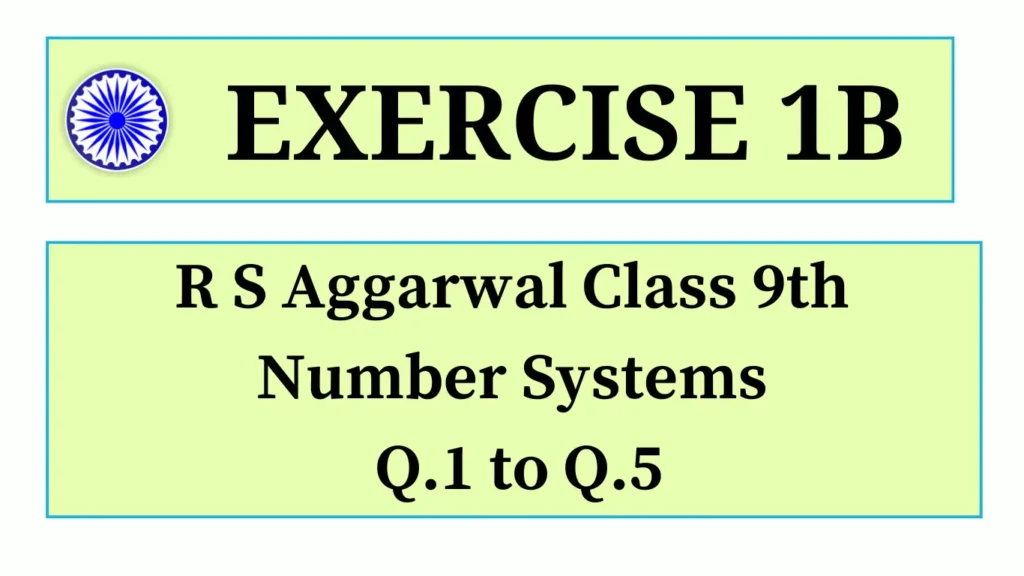
Exercise 1B RS Aggarwal Class 9 contains a total of five questions. The questions are based on the following topics:
- Decimal representation of rational numbers
- Terminating Decimal
- Repeating (or recurring) decimals
- Special characteristics of Rational numbers
The first question of Exercise 1B RS Aggarwal Class 9 is based on terminating decimals.
1. Without actual division, find which of the following rational numbers are terminating decimals.
(i)
Answer
We know that a rational number in the form of is terminating when has 2 or 5 as its only factors.
We have, 80 = 2×2×2×2×5 = .
Here, the denominator of the fraction has 2 or 5 as its only factors.
So, has terminating decimal expansion.
(ii)
Answer
We know that a rational number in the form of is terminating when has 2 or 5 as its only factors.
We have 24 = 2×2×2×3 = .
Here, the denominator of the fraction has 3 as one of its factors. We have got a factor other than 2 or 5.
So, has a non-terminating and recurring decimal expansion.
(iii)
Answer
We know that a rational number in the form of is terminating when the denominator has 2 or 5 as its only factors.
We have 12 = 2×2×3 = .
Here, the denominator of the fraction has 3 as one of its factors. It means we have got a factor other than 2 or 5.
So, has a non-terminating and recurring decimal expansion.
(iv)
Answer
We know that a rational number in the form of is terminating when the denominator has 2 or 5 as its only factors.
We have 375 = 5×5×5×3 = .
Here, the denominator of the fraction has 3 as one of its factors. It means we have got a factor other than 2 or 5.
So, has a non-terminating and recurring decimal expansion.
(v)
Answer
We know that a rational number in the form of is terminating when the denominator has 2 or 5 as its only factors.
We have 125 = 5×5×5 = .
Here, the denominator of the fraction has 5 as its only factor.
So, has a terminating decimal expansion.
The second question of Exercise 1B RS Aggarwal Class 9 is based conversion of a rational numbers into a decimal expansion.
2. Write each of the following in decimal form and say what kind of decimal expansion each has.
(i)
Answer

The decimal form of = 0.625.
It is a terminating decimal expansion.
(ii)
Answer
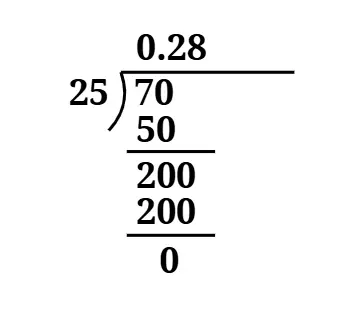
The decimal form of = 0.28.
It is a terminating decimal expansion.
(iii)
Answer

The decimal form of = 0.2727... = 0.27.
It is a non-terminating and recurring decimal expansion.
(iv)
Answer

The decimal form of = 0.384615384615... = 0.384615.
It is a non-terminating and recurring decimal expansion.
(v)
Answer
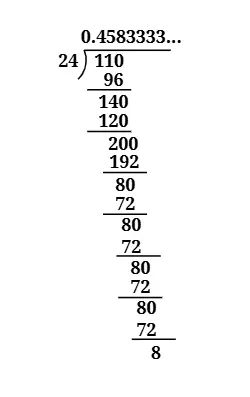
The decimal form of = 0.458333... = 0.4583.
It is a non-terminating and recurring decimal expansion.
(vi)
Answer
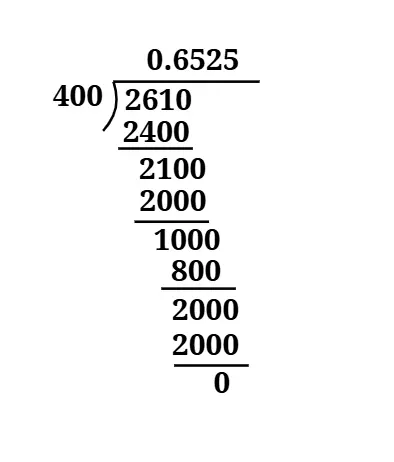
The decimal form of = 0.6525.
It is a terminating decimal expansion.
(vii)
Answer
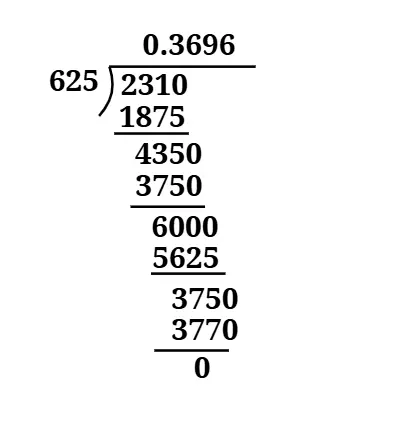
The decimal form of = 0.3696.
It is a terminating decimal expansion.
(viii)
Answer

The decimal form of = 2.41666... = 2.416
It is a non-terminating and recurring decimal expansion.
The third question of Exercise 1B RS Aggarwal Class 9 is based conversion of a decimal form of a rational number to form
3. Express each of the following decimals in the form , where are integers and .
(i) 0.2
Answer
Let = 0.2
----->(1)
----->(2)
Subtracting equation (1) from equation (2), we get
.
.
Hence, 0.2 =
(ii) 0.53
Answer
Let = 0.53
----->(1)
----->(2)
Subtracting equation (1) from equation (2), we get
.
.
Hence, 0.53 =
(iii) 2.93
Answer
Let = 2.93
----->(1)
----->(2)
Subtracting equation (1) from equation (2), we get
.
.
.
Hence, 2.93 =
(iv) 18.48
Answer
Let = 18.48
----->(1)
----->(2)
Subtracting equation (1) from equation (2), we get
.
.
.
Hence, 18.48 =
(v) 0.235
Answer
Let = 0.235
----->(1)
----->(2)
Subtracting equation (1) from equation (2), we get
.
.
Hence, 0.235 =
(vi) 0.0032
Answer
Let = 0.0032
----->(1)
----->(2)
Subtracting equation (1) from equation (2), we get
.
.
.
.
Hence, 0.0032 =
(vii) 1.323
Answer
Let = 1.323
----->(1)
----->(2)
Subtracting equation (1) from equation (2), we get
.
Hence, 1.323 =
(viii) 0.3178
Answer
Let = 0.3178
----->(1)
----->(2)
Subtracting equation (1) from equation (2), we get
.
.
.
.
Hence, 0.3178 =
(ix) 32.1235
Answer
Let = 32.1235
----->(1)
----->(2)
Subtracting equation (1) from equation (2), we get
.
.
.
Hence, 32.1235 =
(x) 0.407
Answer
Let = 0.407
----->(1)
----->(2)
Subtracting equation (1) from equation (2), we get
.
.
.
.
Hence, 0.407 =
The Fourth question of Exercise 1B RS Aggarwal Class 9 asks to express a rational number in fraction in simplest form.
4. Express 2.36 + 0.23 as a fraction in simplest form.
Answer
We have 2.36 + 0.23 = 2.59.
Let = 2.59
----->(1)
----->(2)
Subtracting equation (1) from equation (2), we get
.
.
Hence, 2.59 = .
The fifth question of Exercise 1B RS Aggarwal Class 9 asks to express a rational number in fraction in simplest form.
5. Express in the form of 0.38 + 1.27.
Answer
We have 0.38 + 1.27 = 1.65.
Let = 1.65
----->(1)
----->(2)
Subtracting equation (1) from equation (2), we get
.
.
Hence, 1.65 = .
